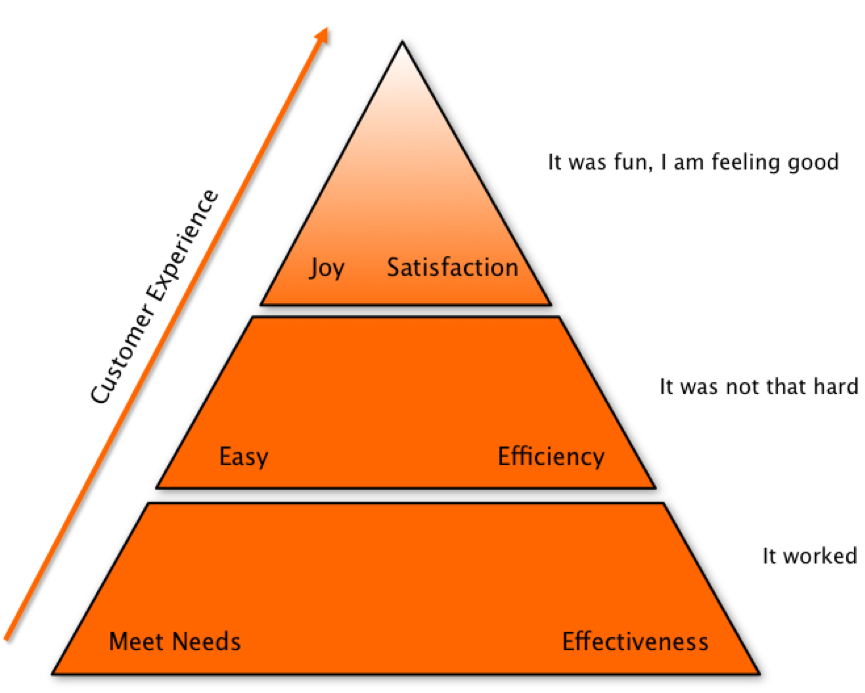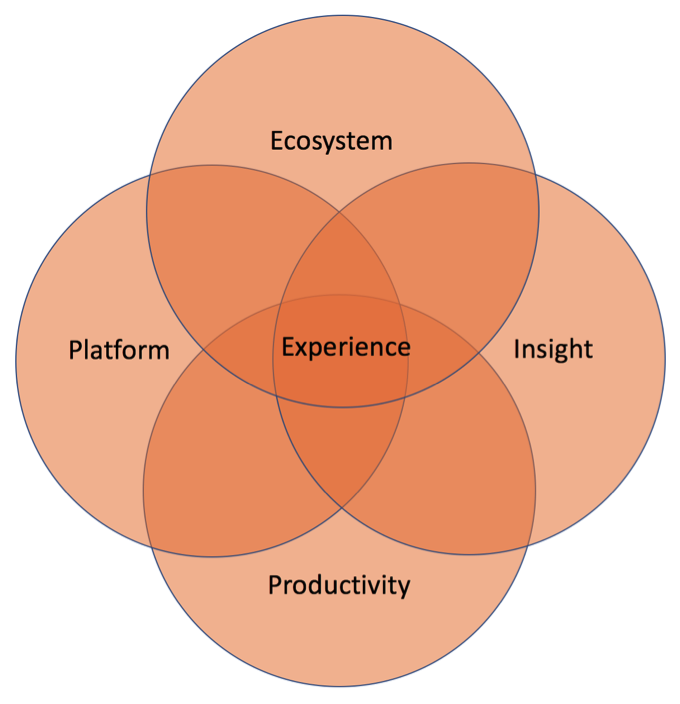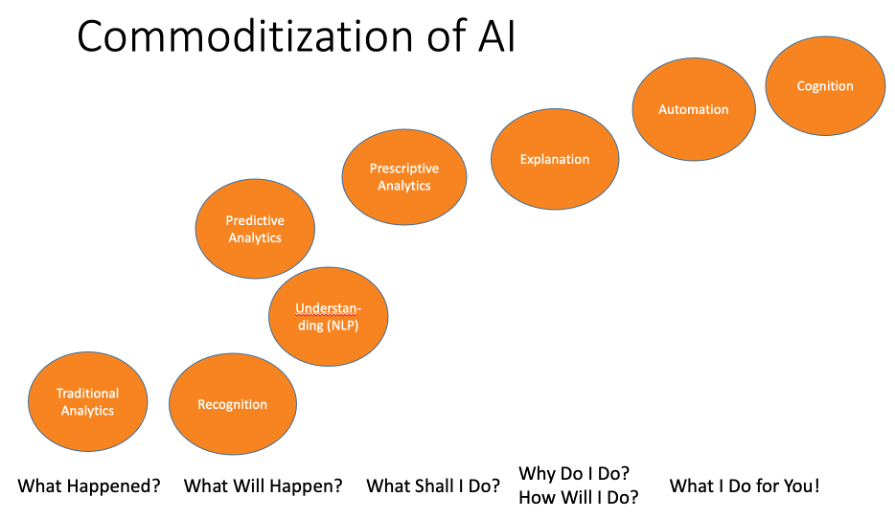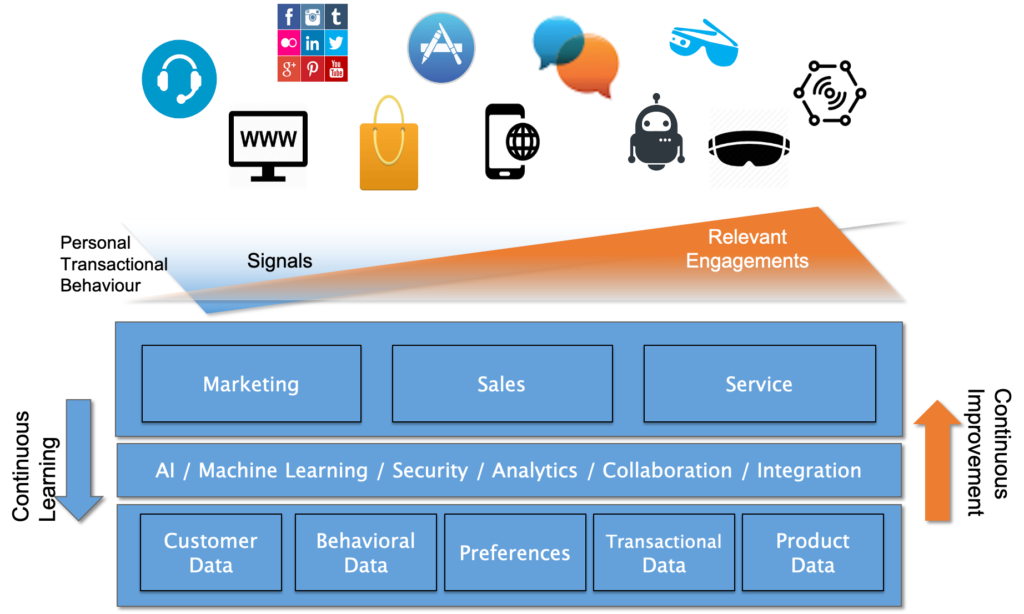It’s that time of year again. And although I’m not really into trend articles, I think it’s time this year to start thinking about what’s going on in the worlds of customer experience and customer relationship management – and how it’s affecting businesses and customers. Especially since I was also asked …
So here’s my list of developments that I think will be relevant in the next few years, in quite random order, and admittedly not entirely without overlap.
Digitization – not Digital Transformation
If there is one theme that has and continues to permeate through the Covid pandemic, it is that of digitalization. The pandemic has painfully brought to light the failure to make necessary investments in consistent processes and technologies in the past. As a result, many companies continue to have processes that are characterized by media disruptions. The need to improve here is also the overarching theme for some of the other developments and trends currently evident.
Companies and their employees, as well as customers, have had to learn to deal with a highly distributed work infrastructure. Companies have responded by building communications infrastructures (zoom fatigue anyone?) and building out or rebuilding their sales and service infrastructures for increased remote capability. This is being done in 3 phases: First, as part of a stop-gap solution, an infrastructure was quickly pulled up that allowed operations to continue somehow. In the second phase, order was brought into the chaos thus produced. Now, in the third phase, more attention is being paid to integration and efficiency.
As a result, we will see more end-to-end digitized processes that address the needs of both customers who want to interact efficiently and effectively with businesses and those of a distributed workforce.
Mind you, I’m talking about digitization here, not digital transformation. The different meanings of these two terms I have described elsewhere
The death of the four P’s is accelerating
Product, Price, Promotion, Placement. The four pillars of marketing are becoming increasingly indistinguishable and thus increasingly irrelevant. They will therefore be increasingly replaced by Customer Experience in order to continue to be successful. Companies will create a culture, supported by processes and technology, that enables their employees to consistently deliver positive experiences to customers across all interactions they have with the company. This will happen via companies refocusing on their core function: Helping their customers find solutions to their problems and offering them. To do this, companies will increasingly follow the pyramid of customer expectations.The pyramid essentially states that a company must first and foremost deliver reliably and accurately, be it information or solutions. The second level is about making this as efficient as possible for the customer, and the third level is about being as authentic and human as possible as a company.

But be careful: It is not about consistently overfulfilling the customer’s expectations. On the contrary, it’s about being as consistent as possible with your own brand.
Conversational is the new black
Several acquisitions in recent months have confirmed a significant trend toward changing the user interface for applications. Facebook bought Kustomer, Salesforce acquired Slack Technologies. Support applications are becoming more aligned with the conversational flow with customers rather than tickets as the leading entity. The steady and soaring use of Messenger systems has demonstrated this user trend for years. The most natural way for us humans to communicate is through speech – not pointing and clicking.

Now companies are following suit and also increasingly offering their employees and customers initially text-based and later also voice-based interfaces to the systems available. That includes combining them with video.
For efficiency reasons, these communication channels are being integrated directly into the application platforms and the Business Communication Platform is becoming part of the overall platform to increase employee productivity.
Work from Home becomes Work from Anywhere
2020 was the year that companies and their employees realized that it’s not that impossible to work effectively even though you’re not in the office. This insight was gained out of sheer necessity rather than conviction, as employees had to be enabled to work from home in a hurry. Necessary infrastructures, if not already in place, were hastily put in place. These are now gradually being made more effective first and then trimmed for efficiency so that they can support employees well (see also Conversational is the New Black). Nevertheless, employees will not work from the home office all the time for a wide variety of reasons. Now that infrastructures are set up and companies and employees have found that it works, it is indeed possible to work from a wide variety of locations. This option will increasingly be offered and used. In Germany, SAP, which has already allowed all employees to freely decide where they work from since 2018, is an early example of this trend.
Embedded AI with an explanatory component
Back in early 2017, I predicted a sharp increase in the commoditization of AI as a technology in my column on CustomerThink. AI and machine learning are not an end in themselves, but are there to help users perform tasks in the best possible way. This can be seen very strongly in the fact that AI techniques are already strongly embedded in business applications and offer users direct assistance or solutions, e.g., in evaluating accounts, leads, opportunities, or even in suggesting so-called ‘next best actions’ in a wide variety of areas.
The problem here is accountability and trust. Users are always responsible for their actions, but want to rely on the predictions and suggestions of the system. However, this is difficult to achieve in a black box that is an AI. Learning from experience simply takes too long in a world where quick wins are necessary.

At the same time, AI technologies are becoming increasingly commoditized by being embedded in business applications.
Therefore, more and more AI-enabled systems will have an explanation component that allows users to evaluate the system’s predictions and suggestions.
The age of the Customer Data Platform and the 360-degree view of the customer – Sigh.
One of the buzzwords that has increasingly emerged in 2020 is that of the Customer Data Platform as a vital component of a system landscape. The corresponding systems certainly have their raison d’être in a corporate cloud world increasingly made up of organizational and data silos, to enable companies to respond properly to customer needs in a given situation, or even to take proactive action. However – and hence the sigh in the headline – they are not the “silver bullet” they are often offered as – nor are they a goal in themselves (see also the next point).
Closely related to this is the notion of a 360-degree view of the customer. Nobody wants that. Really not! Just imagine this logically: Actually, one always looks only at a part of the whole.
What is actually desired and necessary is the ability to use (the right, out of the many that the company has accumulated) existing data to offer the customer, ideally in real time, a solution for the current need.
This requires a comprehensive, consistent, time-dependent data set about the customer, from which, covered by the customer’s consent, the information that is currently relevant is determined and used for the customer’s benefit.
The creation of this comprehensive customer database from many sources and its utilization for all departments is the task of a CDP. Since, as mentioned, too many non-integrated systems exist in companies, another system is needed for the time being to fulfil this task as the core component of a customer experience platform, as shown in the diagram below (with a focus on customer-facing applications).

Which brings me to the next, and more comprehensive, trend.
The boundaries between CDP, personalization, real-time interaction management, and customer journey orchestration are blurring.
A variety of different applications have evolved in the martech stack, but orchestrated to meet a business objective: We have a CDP that divides customers into segments so they can be targeted according to their current interests and consents. The merging of customer profiles created in this way with answers/products/services (content) relevant to the customer takes place using a personalization engine. Providing the determined content at the right time on the right communication channel is the task of Real Time Interaction Management (RTIM) when the customer is moving on digital channels. Each of these interactions is a step in an individual customer journey. A customer can be on several of these journeys with the same company at the same time. Identifying and optimizing these customer journeys is the task of a customer journey orchestration engine. Optimization must be seen through the eyes of the customer – not the company.
At the moment, all of this is often implemented by a wide variety of systems, some with overlapping functionality. This will change to the extent that the separation between these individual systems will increasingly dissolve and they will become more and more modules of a whole. This trend is already evident with some manufacturers, also as a reaction to the fact that this is being demanded more and more so that system landscapes do not become excessively complex.
Efficiency becomes more important again
After a long period of uninterrupted growth, we are seeing declining, and in some cases even collapsing, sales at companies for the first time in years as a result of the Corona pandemic. At the same time, the disappearance of traditional communication and sales channels is increasing the need to invest in digital infrastructures. These are investments that have suddenly become urgent; investments whose importance was not so clear to companies before.
However, many companies now lack the financial freedom to invest for the long term. Therefore, every single investment and process in the company needs to be examined even more closely to see how it/they affect the company’s ongoing revenues and what the RoI looks like. Actions and investments that have an (almost) direct positive impact on cash flow, revenue and profit are gaining in importance. Companies will invest more where they see the famous easily achievable fruits and where efficiency can be gained quickly. This is a concept that Constellation Research analyst Nicole France very aptly calls “revenue operations.”
Marketing and sales merge to become customer engagement
It’s the old familiar song: sales complains that no leads are delivered from marketing, while marketing is always surprised that the leads generated are not picked up. One reaction in the B2B environment to this has been to establish an account-based marketing (ABM) approach, which has two effects.
First, potential customers are targeted with information that is directly tailored to their needs and challenges. Second, ABM provides the first dovetailing of marketing and sales. While this approach only scales to a limited extent, it points in the right direction.
The big step is to bring marketing and sales together into a ‘Customer Engagement’ department, working hand-in-hand with the goal of winning customers by creating value for the customer and a common set of KPIs. This requires an increased outside-in view of companies and processes and ultimately leads to winning more customers by giving them more value early on. This effect can then be amplified by early involvement of deep product or consulting expertise, which a customer engagement team by its very nature does not have.
E-commerce becomes any-commerce
This trend is related to the increasing merging of CDP, personalization, real-time interaction management, and customer journey orchestration that I described above. The path to Any-Commerce is ultimately a logical consequence. The main channels for (B2C) sales to date have been the brick-and-mortar store and the e-commerce presence. In recent years, mobile applications have also been added to a large extent. Messaging and social media as well as external sales platforms are increasingly becoming a part of the channel mix. It will become increasingly irrelevant on which of these channels a customer journey leading to a purchase is started, continued and finally completed.
Of course, this will also have an impact on processes that are not usually associated with customer experience: Warehousing as well as Logistics, as this splitting of channels makes a centralized view of merchandise management more necessary than ever.
All of this, in turn, is a driver for another trend.
Front and back office are merging – finally
More and more companies understand that interacting with customers in a meaningful way requires more than just a front office. As you can also see from the discussion around CDP and the infamous 360-degree view of the customer and the increasing importance of customer experience, this separation tends to be seen as artificial anyway. It is a relic of the days when there were only ERP systems that related to the inner workings of companies. Modern platform architectures and data models harmonized between applications to model business objects ensure a smooth flow of information between departments, applications and between companies and customers.
IoT and Customer Experience
Last but not least, a technology topic that at first seems to have nothing to do with customer experience: Internet of Things, or IoT for short. However, a direct connection can be made via the detour of artificial intelligence. The number of “things” in the network is growing steadily and strongly. Apart from their data collection qualities, many of these devices serve to simplify or improve life for customers, mostly end customers. Be it automatic vacuum cleaners, health applications or sports equipment, even clothing, the Internet of Things is steadily making its way into our lives. One of the goals here is to enable a better experience with the help of the device. I’m sure you’re thinking about privacy and data protection now? I’ll get to that now.
Bonus Trend: Privacy and increasing compliance with the EU DGSVO
In May, the DGSVO celebrates its second birthday after an incubation and preparation period. Surprisingly, many companies have not yet or not sufficiently taken care to stand on a stable foundation in this area. Even now, we often see attempts to trick consent (marketing consents are active by default) combined with the generation of significant effort on the part of a website visitor to avoid the various tracking cookies that are supposed to be set.
The good news is that more and more companies are actually starting to rethink and change their data collection. It doesn’t matter if they’re starting because they’ve seen that the DGSVO isn’t a toothless tiger or because they realize that a more customer-centric strategy of using consent and preferences is more purposeful. Negative headlines such as the Bluekai data scandal last June, as well as browser vendor initiatives to prevent cross-site tacking in browsers as well as mobile apps, probably do the trick.
The good news is that it’s happening!
What trends do you see? Let me hear your thoughts, via Twitter or LinkedIn.



